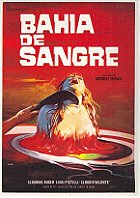Ah, exotica, that most bizarre of subgenre of American jazz popular in the late 50s through the mid-60s that was an aural ersatz approximation of world music through an atomic prism. It didn’t actually sound anything like real music from a Hawaiian luau or the folk sounds of the Amazon, nor did it resemble anything out of the Andes or African tribal drums. Exotica was a pure fantasy creation that sounded right at home in the clean, rounded futuristic spaces viewed on The Jetsons.
Exotica relied upon a combination of rhythms (bongos, conga, bamboo sticks, vibes) alongside found sounds (jungle cat roars, primate shrieks, and bird calls most prominently) to give the vaguest sense of travelogue and safari-like adventures. The whole thing is infinitely preposterous, and then you add in the relative lack of singing in favor of siren-like vocal ululations and chants to make the entire thing sound like the soundtrack of a whacky sci-fi adventure.
Does this sound like a good time to you? Well, it should. Exotica remains a camp delight for those seeking it out. Lucky for you that Ultra-Lounge, Vol 1: Mondo Exotica exists to find a thorough sampling of the various types of exotica all in one place.
Martin Denny, the biggest purveyor of the sound who dubbed it “pure fantasy,” gets the largest amount of selections with six (“Swamp Fire,” “Hypotique,” “Misirlou,” “Jungle Madness,” “The Girlfriend of the Whirling Dervish,” “Quiet Village”), and this is as it should be. You’ll essentially get another Denny song every third track. “Swamp Fire” sets the tone right out the gate, and if your first impression is something along the lines of “what the hell is this?” then you’re not alone. Exotica takes a while to wrap your brain around as it sounds carbon-dated to its era and delightfully space age.
If Denny’s strange lounge music populated with animal shrieks doesn’t make you think of the swinging sixties, then surely 80 Drums Around the World’s “Caravan” will do it. There is a breakdown in “Caravan” that wouldn’t sound out of place as the backdrop to a bunch of go-go dancing bikini girls on the beach. It’s charming in just how obtuse and kitsch it is.
Les Baxter, the godfather of the sound, gets four choices and they display how instrumental he was in laying the foundations. His songs sound less ornate and bizarre than others, compare his “Atlantis,” a dreamy little instrumental, Bas Sheva’s guttural moans and chants on “Lust” and you’ll hear how his ideas only grow once taken up by other artists. Baxter was clearly doing lounge music to everyone else’s dreamscapes of galactic frontiers and surf riders.
Another major player in the genre was Yma Sumac, a Peruvian singer blessed with a ridiculously large vocal range that she puts on full display on both of the choices here. “Babalu” gets transformed far away from its standardized form, you know it most readily from Ricky Ricardo’s persistent playing of it on I Love Lucy, and into something that sounds like a campy Amazonian Moon Queen’s band would play. While “Wimoweh” closes out the album, and it’s the closest that Ultra-Lounge, Vol 1: Mondo Exotica gets to a song played straight. Sumac still lets her backup singers deliver the chorus lines while she hits notes in the highest parts of her range and does a few runs. Sumac’s two songs are daffy and elegant, kitsch and sophisticated at the exact same time.
Mondo Exotica keeps its track listing firmly on the side of the more digestible and accessible pieces of exotica, and it’s an inspired hour of strange, weird sounds. It becomes nearly narcotic in just how obtuse it all is. The Ultra-Lounge series was clearly off to a good start with this set that wisely alternates between the biggest players (Denny, Baxter, Sumac) and lesser-known choices (the Out-Islanders, 80 Drums Around the World, Tak Shindo). The whole collection emerges as a piece of essential listening for your next intergalactic beach party and cookout on Venus.
DOWNLOAD: Yma Sumac’s “Babalu,” the Out-Islanders’ “Moon Mist,” Martin Denny’s “Quiet Village”
 Login
Login
 Home
Home 95 Lists
95 Lists 1531 Reviews
1531 Reviews Collections
Collections
 0 comments,
0 comments, 







